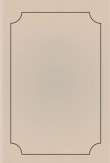You are here
قراءة كتاب An Introduction to Entomology: Vol. IV (of 4) or Elements of the Natural History of the Insects
تنويه: تعرض هنا نبذة من اول ١٠ صفحات فقط من الكتاب الالكتروني، لقراءة الكتاب كاملا اضغط على الزر “اشتر الآن"

An Introduction to Entomology: Vol. IV (of 4) or Elements of the Natural History of the Insects
tag="{http://www.w3.org/1999/xhtml}a">[59]; five in the stag-beetle[60]; seven in the hive-bee and some Lepidoptera[61]; eight in the grub of the stag-beetle[62]; nine in the great Hydrophilus[63]; ten in Dytiscus[64]; eleven in the grub of the great Hydrophilus[65]; twelve in the grub of Dytiscus and the caterpillars of Lepidoptera[66]; thirteen in the larva of Æshna[67]; and twenty-four in Scolopendra morsitans[68]. You must observe that, generally speaking, the number of ganglions is less in the imago than in the larva. With regard to the distribution of these knots to the different primary parts of the body, the following table will exhibit it, as far as I am acquainted with it, at one view. I omit those in which the ganglions are only in one of these parts.
| Head. | Trunk. | Abdomen. | |
| Acrida viridissima | 1 | 3 | 6[69] |
| Hydrophilus piceus | 1 | 6 | 2 |
| Clubiona atrox | 0 | 2 | 1 |
| Gryllotalpa vulgaris | 0 | 2 | 7[70] |
| Myrmeleon, Larva | 0 | 2 | 8[71] |
| Eristalis tenax | 0 | 3 | 2[72] |
| Apis mellifica | 0 | 3 | 4 |
| Ephemera, Larva | 0 | 3 | 7 |
| Æshna, Larva | 0 | 6 | 7 |
3. I am next to say a few words upon the shape of the ganglions. Most commonly it approaches to a spherical figure, but in many instances, as I said before, they, as well as the brain, consist of two lobes: they are, however, seldom all precisely of the same shape. In the Dytisci, and Carabi, the last is marked with a transverse furrow, which seems to indicate the reunion of two[73]; in the stag-beetle, the first ganglion is oval or elliptical, the second hexagonal; the third and fourth shaped like a crescent, and the last like an olive[74]; in the caterpillar of the great goat-moth the first is oblong and constricted in the middle, and the seven last are rhomboidal[75]; in the great Hydrophilus the second, and in the silk-worm all the ganglions are quadrangular[76]; in Hypogymna dispar the third is heart-shaped[77]; the great ganglion which forms the spinal marrow of the cheese-maggot is pear-shaped[78]; that of the grub of the rhinoceros-beetle is fusiform[79]; and in the scorpion all the ganglions are lenticular[80]. But the most remarkable in this respect are those of a spider (Clubiona atrox): in this insect the brain sits upon a bilobed ganglion of the ordinary form, which is immediately followed without any internode by another bilobed one, terminating on each side in four pear-shaped processes or fingers, which give it a very singular appearance[81].


